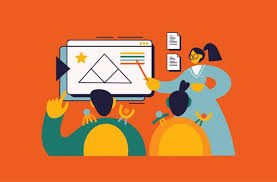In today’s dynamic educational landscape, teachers are constantly seeking innovative methods to capture their students’ attention and enhance learning outcomes. One powerful tool that has emerged as both entertaining and educational is the strategic use of kids animated shows in the classroom. These vibrant, engaging programs offer more than just entertainment—they present complex concepts in accessible formats, making them valuable allies for educators working with young minds.
The synergy between dedicated teachers and thoughtfully selected animated content creates a powerful educational combination. When educators incorporate quality animated programming into their lesson plans, they tap into the visual and narrative learning styles that many children naturally gravitate toward. This multimedia approach helps bridge traditional teaching methods with the digital world that today’s students are immersed in from an early age.
Research consistently demonstrates that children retain information more effectively when it’s presented in multiple formats. The colorful characters, engaging storylines, and memorable songs found in educational animations create multiple pathways for knowledge to enter a child’s understanding. This multimedia learning experience activates different areas of the brain simultaneously, reinforcing concepts and making them more likely to be transferred to long-term memory.
Beyond simple content delivery, quality animated programming often models positive social behaviors and emotional intelligence. Characters work through conflicts, demonstrate empathy, and solve problems collaboratively—all skills that transfer directly to classroom dynamics. Perceptive educators recognize these moments as opportunities for discussion and reflection, extending the learning beyond the animated content itself.
The most effective educational animations are those created with developmental appropriateness in mind. Programs designed for preschoolers differ significantly from those targeting upper elementary students, addressing age-specific learning objectives and social-emotional needs. Skilled teachers understand these distinctions and select animated content that aligns with both curriculum standards and their students’ developmental stages.
Animation also excels at making abstract concepts concrete. Mathematics, science, and social studies concepts that might seem dry or difficult to visualize come alive through animation. The laws of physics, mathematical relationships, or historical events become engaging narratives rather than abstract ideas. This visualization helps students grasp conceptual knowledge that might otherwise remain elusive.
Cultural diversity represents another significant benefit of integrating quality animated content into education. Through thoughtfully selected programs, children can be exposed to different cultures, traditions, and perspectives. This exposure plants seeds of global awareness and cultural appreciation that might not be easily accessible in the immediate community, especially in geographically isolated or culturally homogeneous areas.
The technological literacy fostered through educational screen time also prepares students for their future. As digital citizens, today’s students will navigate a world where media literacy is essential. Teachers who thoughtfully incorporate and discuss animated content help students develop critical viewing habits and media analysis skills that will serve them throughout their lives.
Parents often express concerns about screen time, making the partnership between home and school crucial when incorporating animated content. Effective educators communicate clearly about the educational purposes behind showing specific programs, offering parents insights into the learning objectives being addressed. This transparency helps build trust and often provides parents with quality content suggestions for home viewing.
Accessibility represents another advantage of educational animation. Students with different learning needs or language backgrounds often find animated content more accessible than traditional text-based materials. The visual storytelling, coupled with audio components, creates multiple entry points to learning, making content more universally accessible regardless of ability or background.
The production quality of educational animations has increased dramatically in recent years, with content creators partnering with educational experts to ensure pedagogical soundness. This collaboration results in programming that balances entertainment with substantial educational content, avoiding the pitfall of being either too didactic or lacking educational substance.
Teachers who maximize the benefits of animated content don’t simply play videos and consider their work done. Instead, they create thoughtful viewing guides, pause for discussion, and develop follow-up activities that extend and apply the concepts presented. This active approach to media consumption transforms passive viewing into active learning experiences.
Assessment possibilities expand when animated content becomes part of the educational toolkit. Students can demonstrate understanding through creating their own animated stories, analyzing character motivations, or applying concepts from the programs to new situations. These creative assessment approaches often reveal deeper understanding than traditional testing methods.
Professional development for educators increasingly includes guidance on effectively incorporating multimedia resources, including animation, into curriculum. Forward-thinking school districts recognize that teachers need support in identifying quality content and developing best practices for its implementation. This investment in teacher knowledge ultimately benefits student learning outcomes.
The potential for animated content to level the playing field for disadvantaged students cannot be overlooked. While some students have extensive enrichment experiences outside school, others have more limited exposure to educational resources. High-quality animated programming can provide shared reference points and build background knowledge for all students, helping address educational inequities.
As technology continues advancing, the intersection of animation and education grows even more promising. Interactive animated content allows for personalized learning paths, immediate feedback, and student-directed exploration. Visionary teachers embrace these innovations while maintaining focus on fundamental learning objectives rather than being distracted by technological bells and whistles.
Looking ahead, the partnership between educators and educational animation creators will likely strengthen, with teachers having more input into content development. This collaborative approach ensures that animated programming meets real classroom needs while maintaining the engagement factor that makes animation so effective with young audiences.

